Key takeaways:
- Flower colors carry emotional meanings, with specific combinations evoking distinct feelings, such as joy with yellow and red with love.
- Using complementary colors can create striking contrasts in arrangements, enhancing visual appeal and evoking strong emotions.
- Incorporating different textures and shapes adds depth and interest to floral designs, influencing the overall aesthetic and emotional vibe.
- Seasonal color palettes and a unified color scheme enhance the emotional resonance of arrangements, making them more meaningful and visually cohesive.
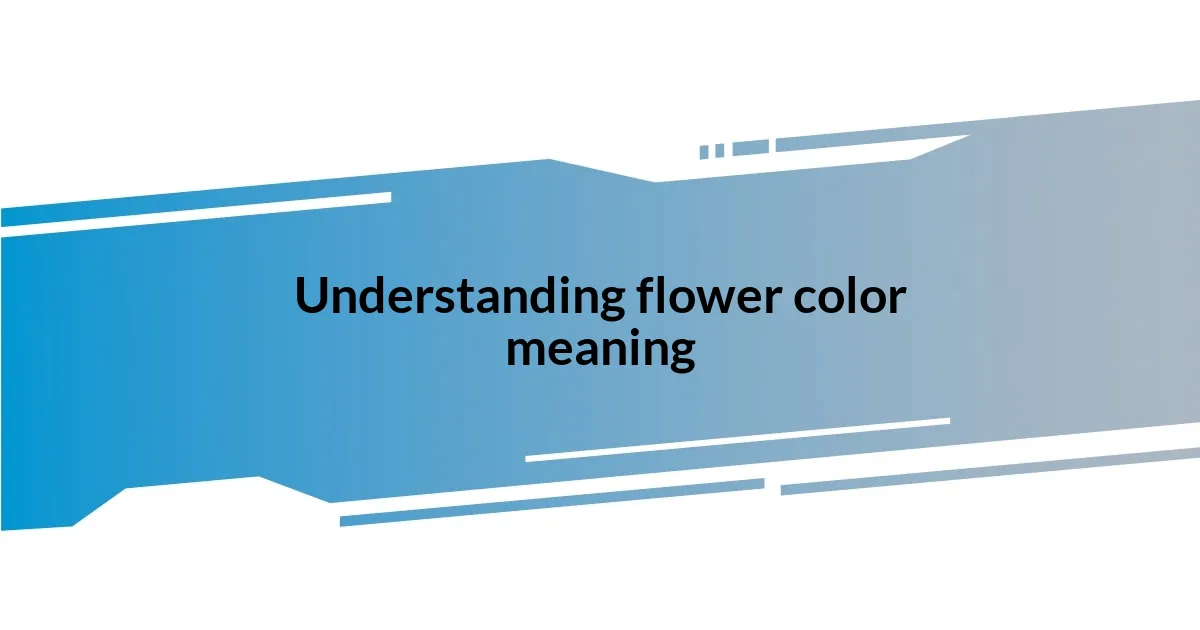
Understanding flower color meaning
When I first started arranging flowers, I quickly learned that color isn’t just about aesthetics; it has deep emotional resonance. For instance, red roses symbolize love and passion, while yellow ones evoke joy and friendship. I often ask myself, how do the colors we gravitate towards reflect our feelings or intentions in gifting?
One memorable moment for me was when I received a bouquet of lavender lilies. In that instant, I felt a sense of tranquility and peace, as purple is often associated with calmness and spirituality. This experience left me pondering—can the colors we choose in our gardens or arrangements act as a mirror to our innermost selves?
It’s fascinating to explore how different cultures interpret flower colors. For example, in some traditions, white flowers signify purity and innocence, while in others, they might be linked to sorrow or loss. I find it really compelling to think about how my personal experiences intertwine with these meanings, creating a unique blend of emotions every time I interact with flowers.
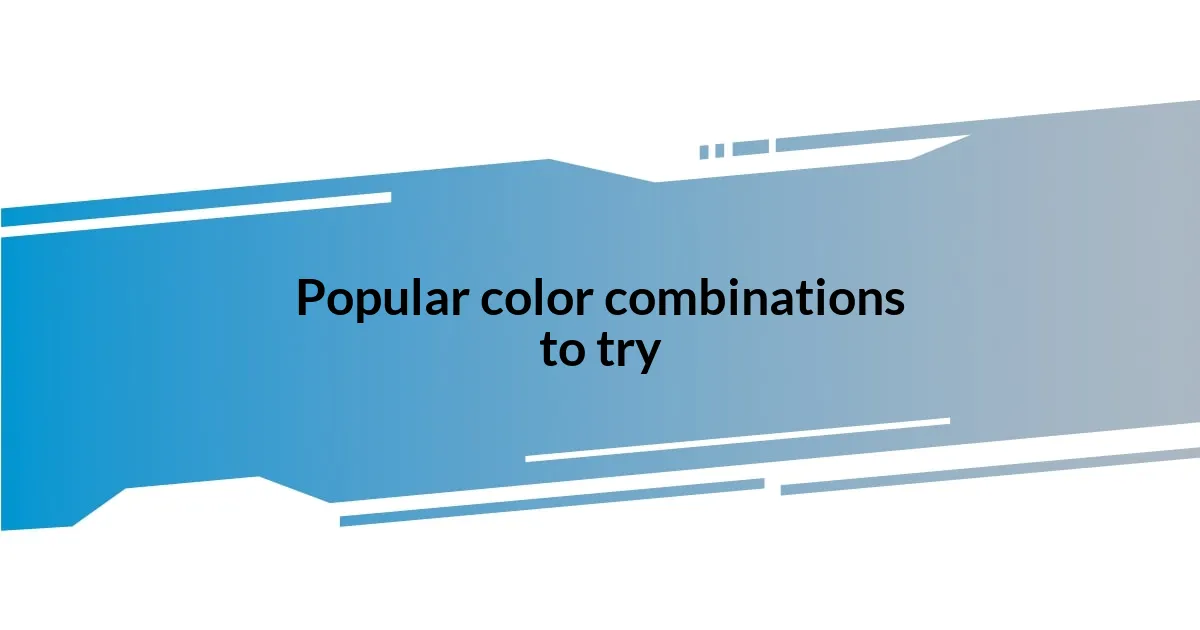
Popular color combinations to try
When it comes to popular color combinations, one that never fails to catch my eye is the classic duo of white and green. I find that white flowers, like peonies or daisies, paired with lush green foliage create an elegant and fresh look. There’s something about this combination that feels refreshing, almost like a serene walk in a botanical garden.
Another striking combination I adore is vibrant orange and deep purple. The energy of orange blooms, such as marigolds, juxtaposed with the richness of purple flowers, like irises, offers a vibrant visual feast. I remember crafting an arrangement like this for a friend’s birthday, and the excitement in their eyes was priceless! It’s a wonderful way to express joy and exuberance through flowers.
Lastly, I absolutely love the pairing of pastel hues—think soft pinks, blushing corals, and delicate yellows. I often use these colors for spring-themed gatherings, as they evoke feelings of warmth and happiness. The softness of these shades captures the essence of renewal, making it perfect for celebrating new beginnings in life.
| Color Combination | Emotional Impact |
|---|---|
| White & Green | Serenity & Freshness |
| Orange & Purple | Energy & Exuberance |
| Pastel Hues | Warmth & Happiness |
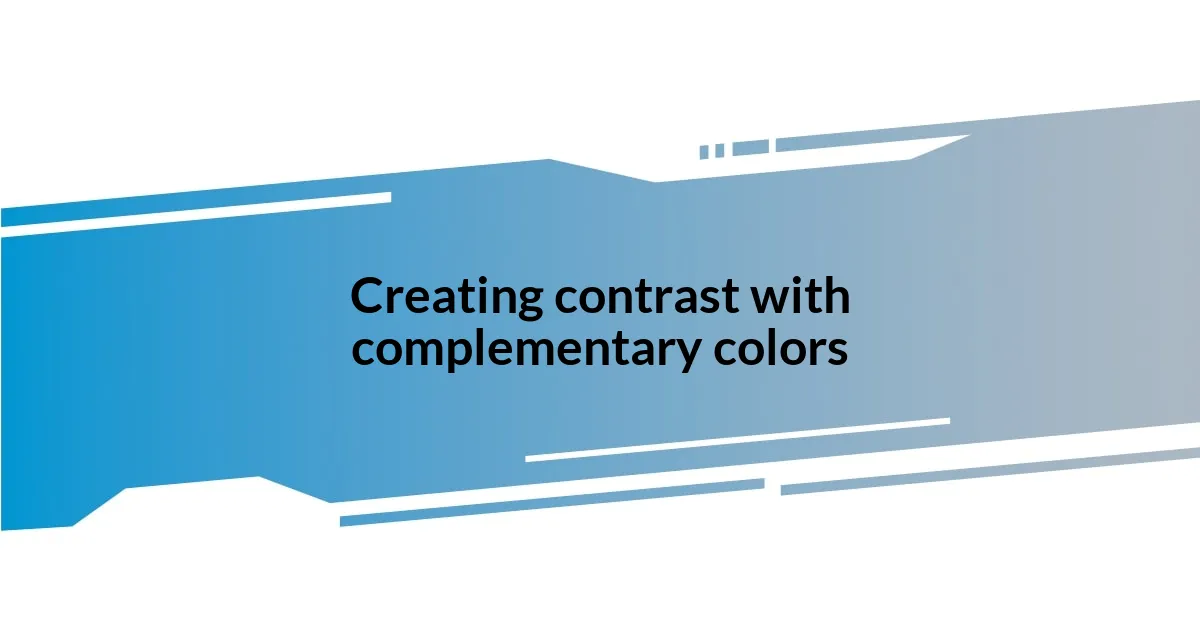
Creating contrast with complementary colors
Creating contrast with complementary colors
Using complementary colors in flower arrangements is one of my favorite techniques for creating striking visual contrasts. I remember an occasion when I combined bright yellow sunflowers with deep purple asters. The vibrancy of the yellow really popped against the rich purple, capturing everyone’s attention. It felt like a celebration of life, drawing all eyes to that stunning display.
Here are some effective complementary color pairings to consider for your arrangements:
– Yellow and Purple: Energizing and regal.
– Orange and Blue: Vibrant and refreshing.
– Red and Green: Classic and festive.
– Pink and Lime Green: Playful and lively.
– Blue and Orange: Bold and eye-catching.
In my experience, these combinations can evoke strong emotions and spark conversations, enhancing the atmosphere in any setting.
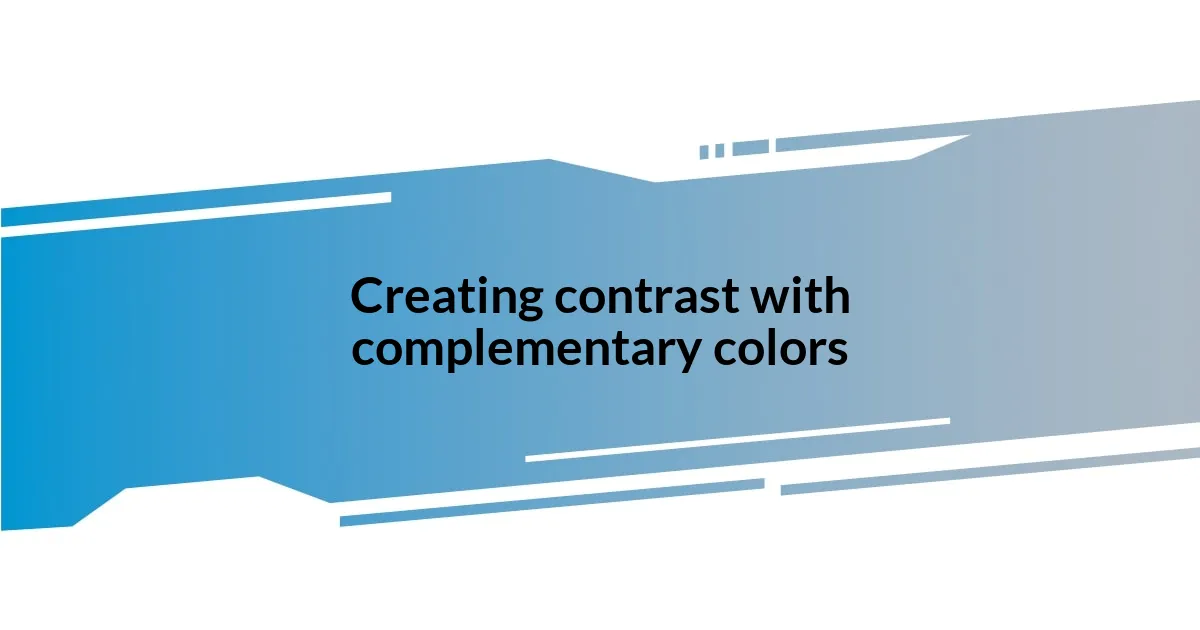
Using analogous colors for harmony
When I think about using analogous colors in flower arrangements, I recall a stunning display I once created for a summer wedding. The arrangement featured soft yellows, sunny oranges, and warm peach hues. It was fascinating to see how these adjacent colors blended seamlessly, evoking feelings of warmth and togetherness among the guests. Don’t you find that such harmonious combinations can pull at your heartstrings?
This technique can truly elevate the atmosphere of an event. For instance, I designed a centerpiece using blush pinks, lavender, and lilac shades for a friend’s baby shower. The soothing gradient of colors not only complemented the joyful theme but also conveyed a sense of calm anticipation. There’s an undeniable magic when analogous colors come together; it’s as if every flower is speaking the same beautiful language.
Leveraging analogous colors also opens doors for creativity. I often recommend experimenting with different shades to find your unique touch. For instance, combining deep reds with bold oranges can create an unexpected yet delightful visual impact, perfect for autumn gatherings. What color pairings have you thought about trying in your next floral project?
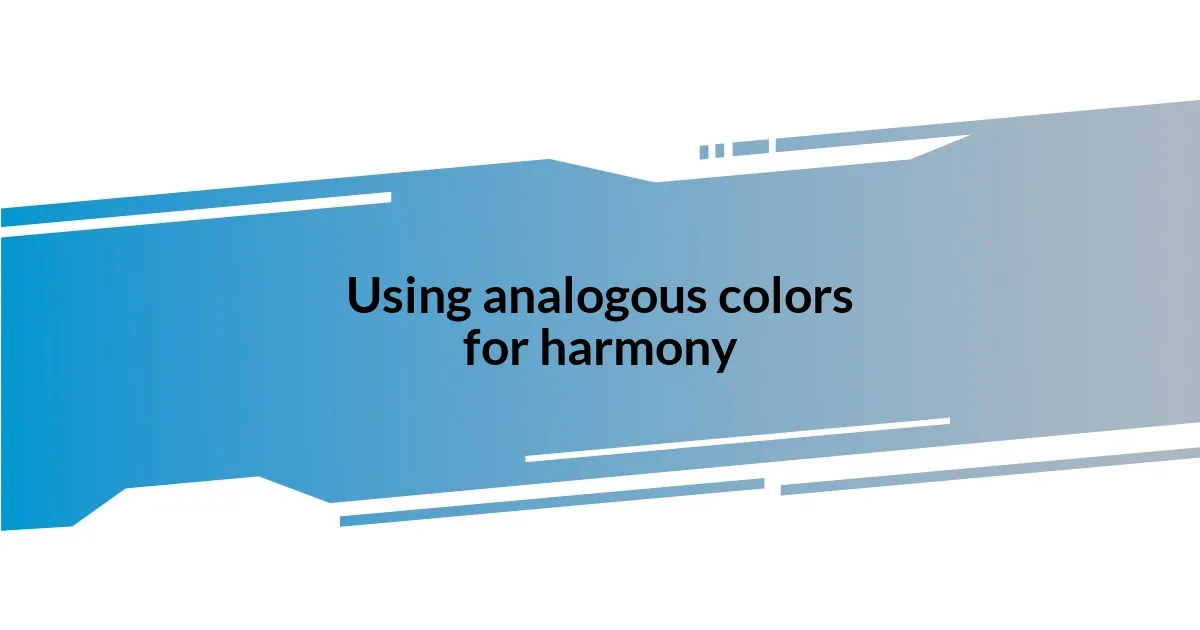
Seasonal color palettes for flowers
One of the most enchanting aspects of flowers is how their colors shift with the seasons. For example, during spring, I love to see pastel palettes that highlight the delicate beauty of nature awakening. Recently, I arranged soft pink roses with pale blue forget-me-nots and hints of lavender, capturing that magical sense of renewal. Doesn’t it feel fresh and rejuvenating when we witness such gentle color harmonies at the start of warmer days?
As the temperatures rise in summer, vibrant and bold colors take center stage. I fondly remember crafting a bouquet filled with fiery red dahlias, sunny yellow marigolds, and pops of brilliant orange zinnias. The fiery combination exudes energy and joy, making it impossible not to smile when you see it. Anyone else feel a rush of happiness when surrounded by such lively shades?
When autumn rolls around, I find myself drawn to earthy tones. Deep oranges, rich burgundies, and dusky purples create a warm embrace reminiscent of cozy sweaters and pumpkin spice. I once put together a fall centerpiece using rusty orange chrysanthemums and deep plum calla lilies. Each flower seemed to whisper the secrets of the season to me—it’s a magical transformation! How do you feel about the autumn color palette?
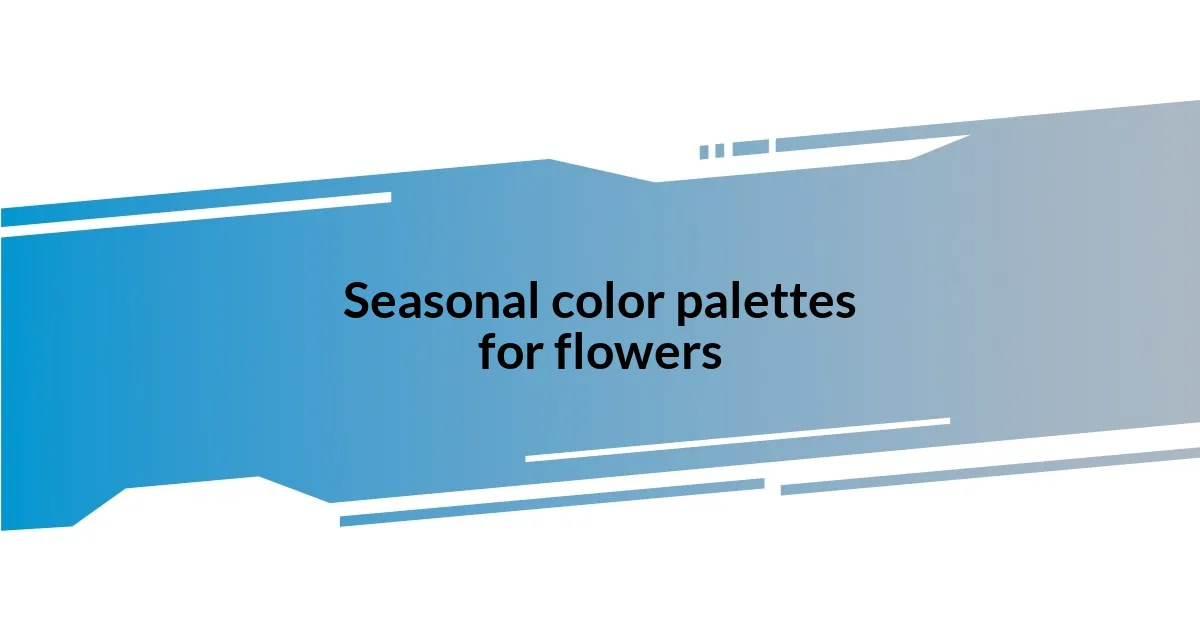
Incorporating textures and shapes
To truly bring a floral arrangement to life, I’ve found that incorporating different textures and shapes can make all the difference. For example, in one of my projects, I paired the smooth, delicate petals of peonies with the spiky forms of thistles. The contrast was striking! Can you imagine how these textures not only added visual interest but also created a tactile experience for anyone who encountered the arrangement?
Shapes play a vital role too. I remember designing a bouquet for a friend’s wedding where I mixed rounded blooms, like hydrangeas, with elongated flowers, such as snapdragons. This combination gave the bouquet depth and movement, almost like a dance of flowers. It was thrilling to see how each shape brought its own character, drawing the eye in different directions. Have you noticed how the shapes of flowers can influence the emotional vibe of your arrangements?
Including varied textures, such as the softness of lacey ferns against the boldness of orchids, can create a rich visual treat. I often play around with incorporating unexpected elements, like berries or succulents, which add a unique twist. It sparks joy to watch guests explore these details; sometimes, I even catch them reaching in to touch. How do you think textures influence the overall aesthetic of your floral designs?
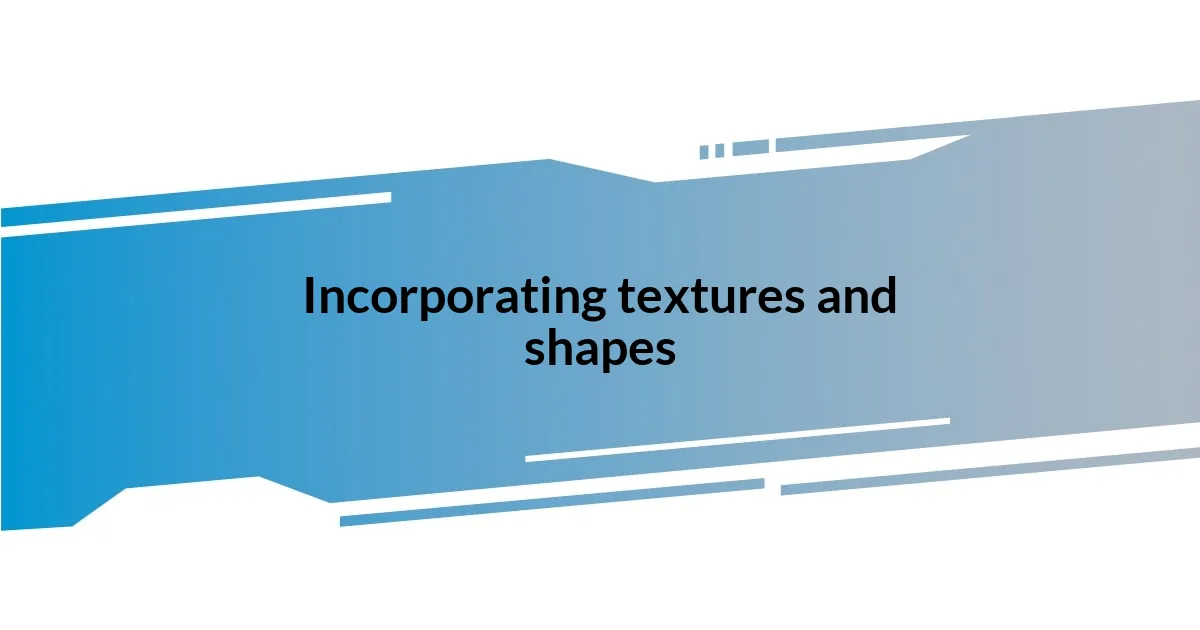
Tips for cohesive floral arrangements
When arranging flowers, I find that using a limited color palette works wonders for achieving a cohesive look. For instance, once I decided to focus solely on shades of blue and white, combining delicate hydrangeas with fragrant white lilies. The result was a serene and calming arrangement that felt like a breath of fresh air—don’t you think that a unified color scheme can really elevate the overall impact?
I also love to think about how colors relate not just individually, but in terms of their surroundings. During one summer gathering, I created a bouquet that echoed the hues of our backyard—bright yellow sunflowers mirrored the sun, while deep greens from nearby foliage complemented the arrangement beautifully. This connection to the environment added an extra layer of meaning to my work; have you ever considered how surrounding elements can enhance your floral displays?
Additionally, balancing warm and cool tones can create depth and intrigue. I remember experimenting with a mix of soft peach roses and deep purple irises once; the warm tones created a welcoming aura, while the purples offered a bit of drama. That contrast caught the eye and kept the arrangement engaging. Isn’t it fascinating how the emotional resonance of colors can influence the mood we set in any space?